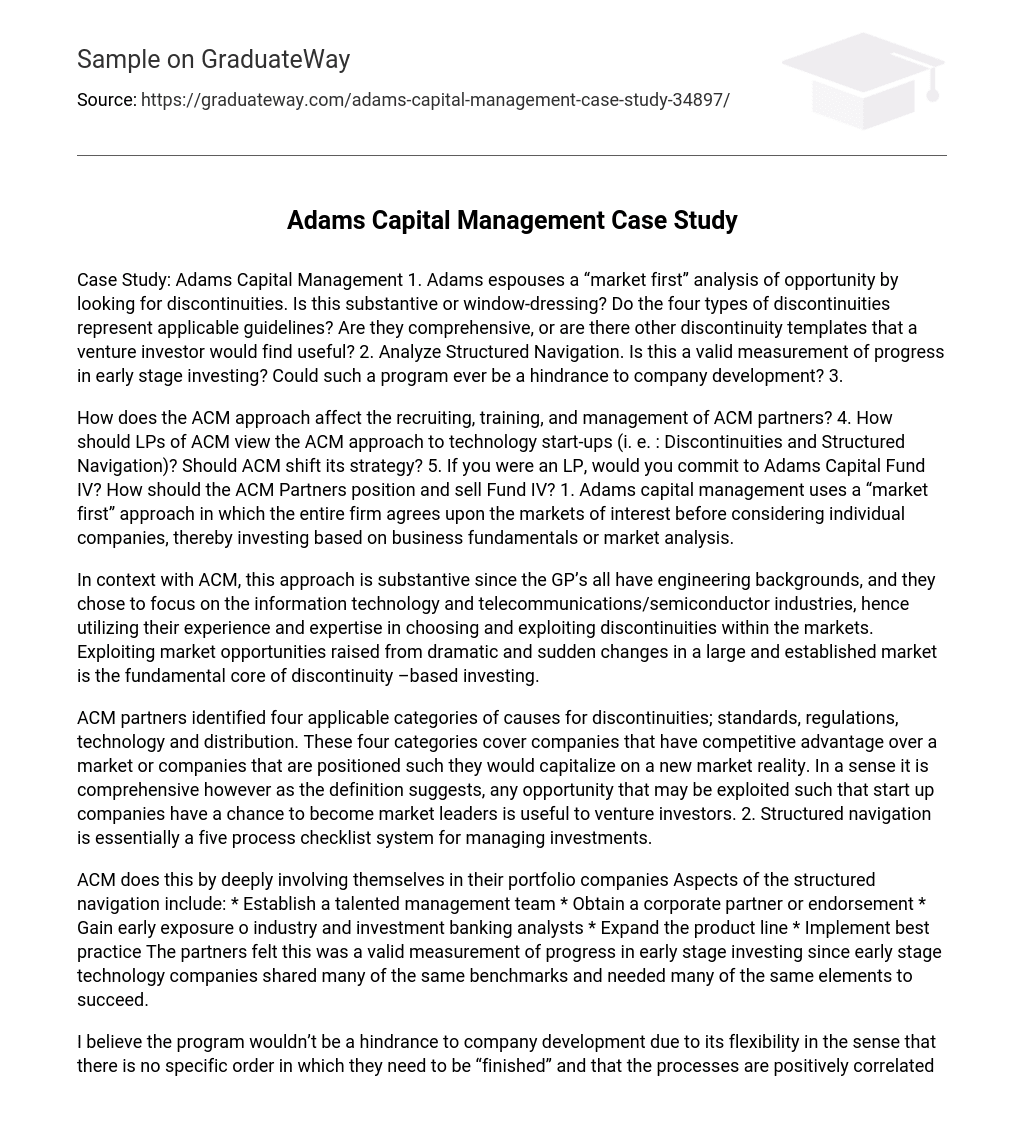Adams capital management employs a “market first” strategy in which the entire firm collectively determines the markets they are interested in prior to considering specific companies to invest in. They base their investments on business fundamentals and market analysis. This approach is significant within ACM because all of the GP’s have engineering backgrounds. They specifically focus on the information technology and telecommunications/semiconductor industries, utilizing their knowledge and expertise to identify and take advantage of disruptions within these markets. The primary foundation of discontinuity-based investing is capitalizing on market opportunities that arise from sudden and significant changes in established markets.
ACM partners have identified four categories of causes for discontinuities: standards, regulations, technology, and distribution. These categories encompass companies that have a competitive advantage in a market or are positioned to benefit from a new market reality. In essence, this comprehensive definition implies that any opportunity that can be exploited for start-up companies to become market leaders is valuable to venture investors.
Structured navigation is a system for managing investments that consists of a five-step checklist. ACM accomplishes this by actively participating in their portfolio companies. Some aspects of the structured navigation include:
- Establish a talented management team
- Obtain a corporate partner or endorsement
- Gain early exposure o industry and investment banking analysts
- Expand the product line
- Implement best practice
The partners believed that measuring progress in early stage investing was valid because early stage technology companies had similar benchmarks and requirements for success. I think the program would not hinder company development because it is flexible and does not require specific steps to be completed in a particular order. Moreover, the processes are positively correlated, which ultimately enhances the likelihood of company success.
The ACM approach is distinct from conventional venture firms because it replaces venture capitalists, who are typically crucial deal makers, with partners who are recruited, trained, and managed similarly to most employees. In this approach, partners are considered replaceable. It is likely that the LPs (Limited Partners) of ACM would have a favorable opinion of this approach.
ACM showcases its expertise in technology start-ups by investing in discontinuities and conducting thorough management due diligence through structured navigation. This emphasis on competitive advantage is comforting to LPs, but ACM should refrain from altering its strategy. However, the problem arises in resource allocation for managing portfolio companies, as investing in an increased number of companies would result in diluted managerial resources.
Considering the systematic appeal of Discontinuities based investing and structured navigation approach of ACM, I would invest in Adams capital Fund IV. However, it should be noted that the earlier funds operated in a more volatile market environment for VC. Additionally, ACM is currently going to market with a good small early fund, a struggling second fund, and a yet unproven third fund. The question then remains: Will ACM decide to acquire and maintain significant positions and board seats as they did in ACM Fund III?





